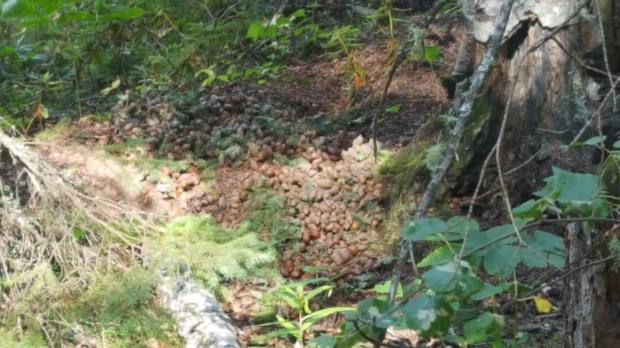This is the first year since 2015 I won’t be conducting fieldwork on food-caching red squirrels in Kluane, Yukon. While I miss that population of squirrels immensely, this year offers me the chance to observe the preparation for winter in a different locale. Recently I took a day trip up to Prince Albert National Park into the very southern edge of boreal forest, and I was delighted to see the squirrels in black spruce and jack pine forest gathering snacks for their larders. While Kluane squirrels live in white spruce forest, the biology of black spruce and jack pine are different enough that squirrel tactics are a bit different and the forests aren’t as familiar to me. Nevertheless, I got to meet a champion food cacher along the Waskesiu River Trail caching cones and watch it hucking dirt as it hollowed out tunnels to store the food underground.
Being about 10 degrees in latitude further south than I typically am this time of year, it’s interesting watching the shift between summer and fall, those annual timings of the natural world referred to as “phenologies”. Here in Sask, the canola is mostly swathed, ducks are beginning to flock together again, and squirrels are a bit more visible as they run around to stock up on energy (eating lots to put on fat for hibernation in the case of thirteen-lined ground squirrels in Saskatoon, and gathering non-perishable foods like seeds to eat throughout the winter for non-hibernating animals like my favourite red squirrels).
As for me, I’m preparing for a long, cold, Saskatchewan winter by ensuring I’m getting outside lots now while the days are still long, harvesting honey from our bees, making jam from our raspberries, and planning out some hikes now that I don’t have to gather data on everything I see this fall – even though I know I’ll keep spending hours watching red squirrel antics anyways.




You must be logged in to post a comment.